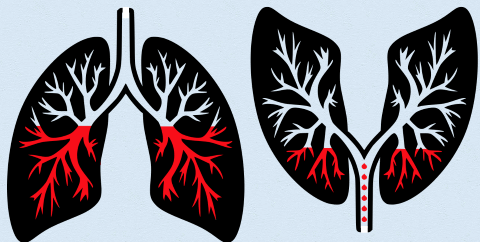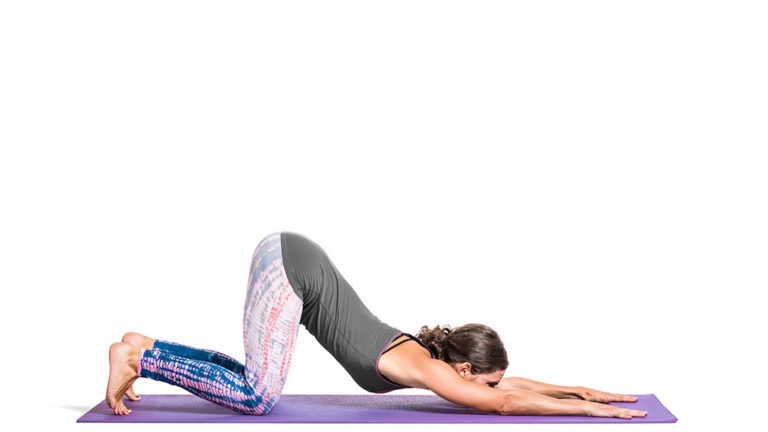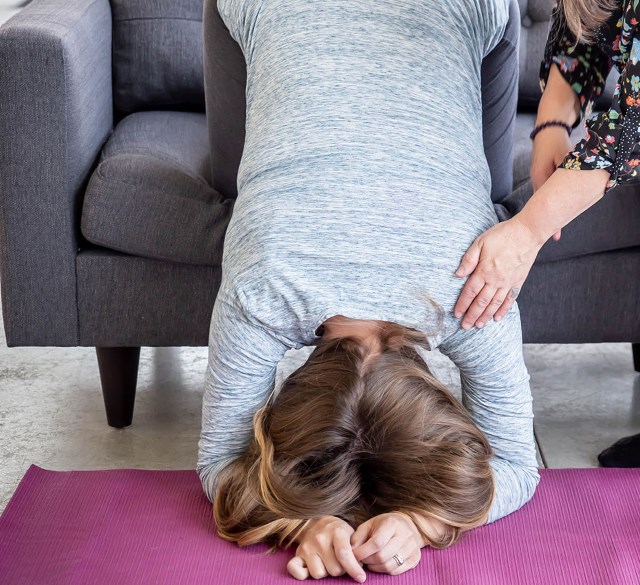

IntroductionInversion therapy has long touted its respiratory benefits. One benefit is that instead on gravity pressing down on the rib cage and reducing lung capacity, it pulls up on them, enlarging the rib cage. Also, blood migrates from the legs to the top half of the body - where the lungs, heart and brain are located.
PneumoniaThis page addresses another potential benefit of inversion therapy - on pneumonia and other pneumonia-related respiratory disorders. The benefit is gravity-assistance helping to drain liquid out of the lungs.In pneumonia - and other severe respiratory disorders - the gas exchange units at the end of the air passages of the lungs can become infected. They often respond by pouring out mucus - which typically contains viral (or bacterial) particles. In normal, healthy people this fluid causes irritation and is then coughed (or sneezed) out - spreading the associated infection to others. However, if lung function is compromized, the lungs can gradually become filled with this material. This then causes further irritation and inflammation. After a while, the lungs become unable to get enough oxygen to the bloodstream and can no longer expel carbon dioxide. The paitent can then suffer from asphyxiation - and eventually death.
Inversion therapyInversion therapy can likely be used to help to avoid this outcome. If the patient is partially inverted, gravity can helps the fluid drain into the throat where it can be more easily coughed up - and either spat out or swallowed (it doesn't matter much which). The fluid no longer accumulates in the "dead end" branches at the bottom of the lungs. The patient no longer drowns in their own juices.
DiagramsDiagrams can help to understand the idea. On the left, upright. On the right, inverted:
Now, the patient on the right still has a problem but: some fluid is draining out of them with gravity assist. Fluids trapped in the lungs near the neck can also be expelled under gravity - by alternating between inverted poses and various other more upright positions.
PositionsIntermittent partial inversion should often be enough. That is fairly easy for patients to try while in bed. It looks something like this:
 A simple partly-inverted pose The face should point downwards, to assist with spitting out coughed-up fluids. The head can be turned to the side as necessary. Here is a more dramatically inverted pose:
 Inverted pose using a sofa There's quite a lot of possible intermediate poses. Also, variable quantities of padding can be used to make the poses more comfortableon the neck.
 Partly-inverted pose with nearby padding
Other positionsSpending some time lying on the side and back may also be a good idea. Lying on your back can make spitting out phlegm inconvenient, though, and it can pose a risk of choking.
Evidence-based medicineWhile I would be delighted to claim that this technique is evidence based medicine, at the moment that appears to be largely untrue - since insufficient trials have been performed. I do however think that the medicine here is good common sense. There have been some related studies.
Postural drainageThe medical establishment refers to this type of technique as "postural drainage". It is often combined with "chest physiotherapy" - which often involved banging on the chest wall to help free mucus. I link to some related resources in the references below.
Prone ventilationThis therapy places the patient in a prone position. There has been research on whether that intervention alone helps - and it does seem to. Links to some of the research are in the references below.
SleepIf the patient can sleep, fluid may accumulate in the lungs during the night. These fluids should be expelled upon wakening. Coughing fits can cause the patent to awaken regularly. If they do so, they should often clean out their lungs using this technique.
HospitalsHospitals dealing with pneumonia fairly often put patients on their backs, intubate them and elevate the head of the bed. The head of the bed is elevated because it reduces the chance of asphyxiation through choking - and there's research that shows this improves outcomes. If breathing completely fails something like this can become necessary. However, lying on your back with your head elevated conflicts with the technique described here. Trying inversion therapy first should hopefully reduce the chance that a breathing tube will be required.If inversion therapy proves to be successful, hospitals should consider attempting to incorporate it into their protocols. As far as I understand it, patients with breating tubes are frequently not placed on their stomachs because turning the head can interfere with the tracheal tubing. However, this leads to a difficult situation where the fluid in their lungs has no easy way to drain out. It is a problem, but not one completely beyond physical therapy techniques.
Side effectsSpending a lot of time on your front in bed can result in bed sores. For patients hooked up to ventilators being face down can result in dislodgement of tracheal tubes and catheters. Unfit or unconscious patients may face mechanical difficulties adopting the positions. Do what you can to deal with these issues.
YogaThe therapy described here is inspired the inversion poses of classical yoga. Other yoga techniques are also relevant as preventative measures. In particular back bends can help improve overall lung capacity over a period of time and breathing exercises can also help improve lung capacity and breathing function. There may also be some "first aid"-related applications of these techniques for pneumonia patients - for example deep breathing may be beneficial when you are sick with pneumonia.
TestingAs far as I understand the situation, the treatment described here has a good theoretical basis, but it is under-studied and needs more testing. Medical consensus is that it is at least fairly safe. If you try the technique, please post a link to this page on the internet and/or describe your experience. If you can study the technique more formally, please publish your results.
Other noteworthy home therapiesThere are various other simple things that can be done to help relieve pneumonia symptoms. Noteworthy among these are:
CoughingCoughing is important since it breaks up mucus and allows cilliary transport out of the lungs. However for those with pneumonia, coughing can also create and disturb scar tissue and be painful. It can also be directly stimulated by pathogens - for whom it is their route to new hosts.I am not able to give much advice about coughing. Don't cough too little or too much. Also take care with overuse of cough suppressants. Menthol is a common and popular cough suppressant.
HumidityLow humidity is a common feature of winter conditions and it can make respitory disorders worse. In particular it can interfere with cilliary transportation - which is critical to proper lung function. If respiratory mucus becomes too viscous, the cilliary transport mechanism cannot transport it out of the lungs effectively. Note that high humidity can cause health problems as well.
Coronavirus epidemicIt is my hope that this proposed treatment will help to reduce the death rate associated with the coronavirus epidemic. COVID-19 patents with pneumonia are encouraged to try inversion before their lungs fail completely. Note that the techniques described here can still be used if no intensive care is available.The vast majority of the pictures of coronavirus patients being treated in hospitals I have seen show them in bed, on their backs, often with the head somewhat elevated. It does not seem like the best position.
DisclaimerDisclaimer: I am not a doctor. Please follow the treatment regime proposed here at your own risk. Also: if you have pneumonia, I do not recommend hesitating to see a doctor under the belief that you can treat the problem yourself at home.
ReferencesPostural Drainage
|